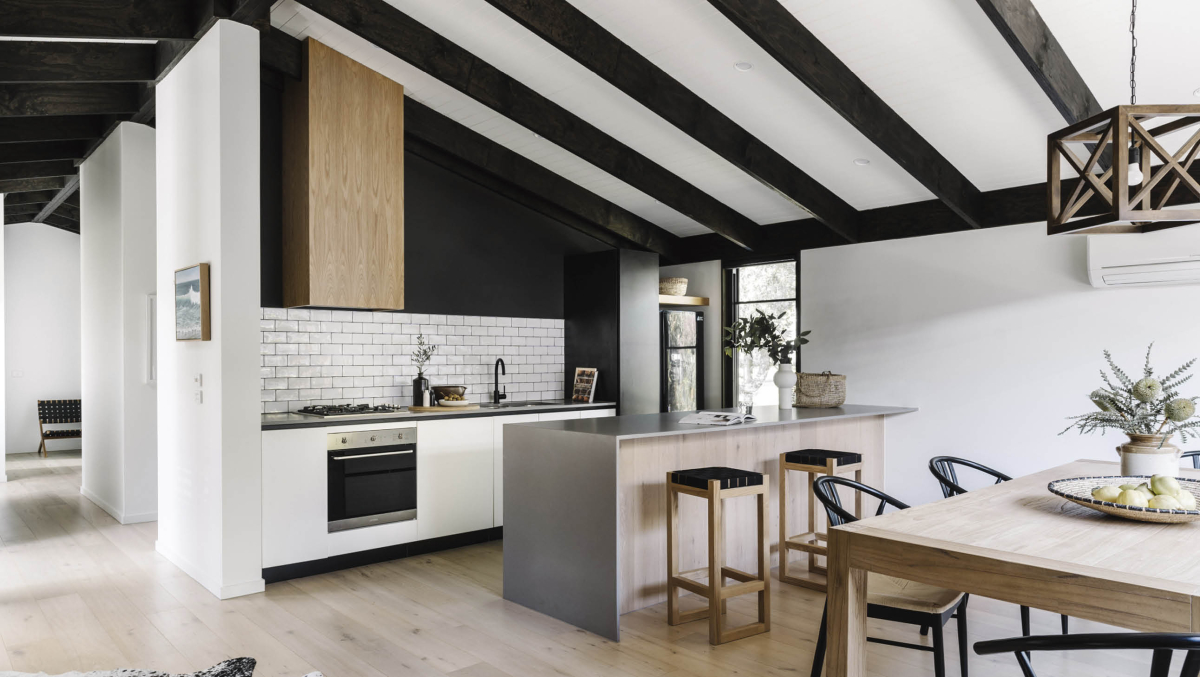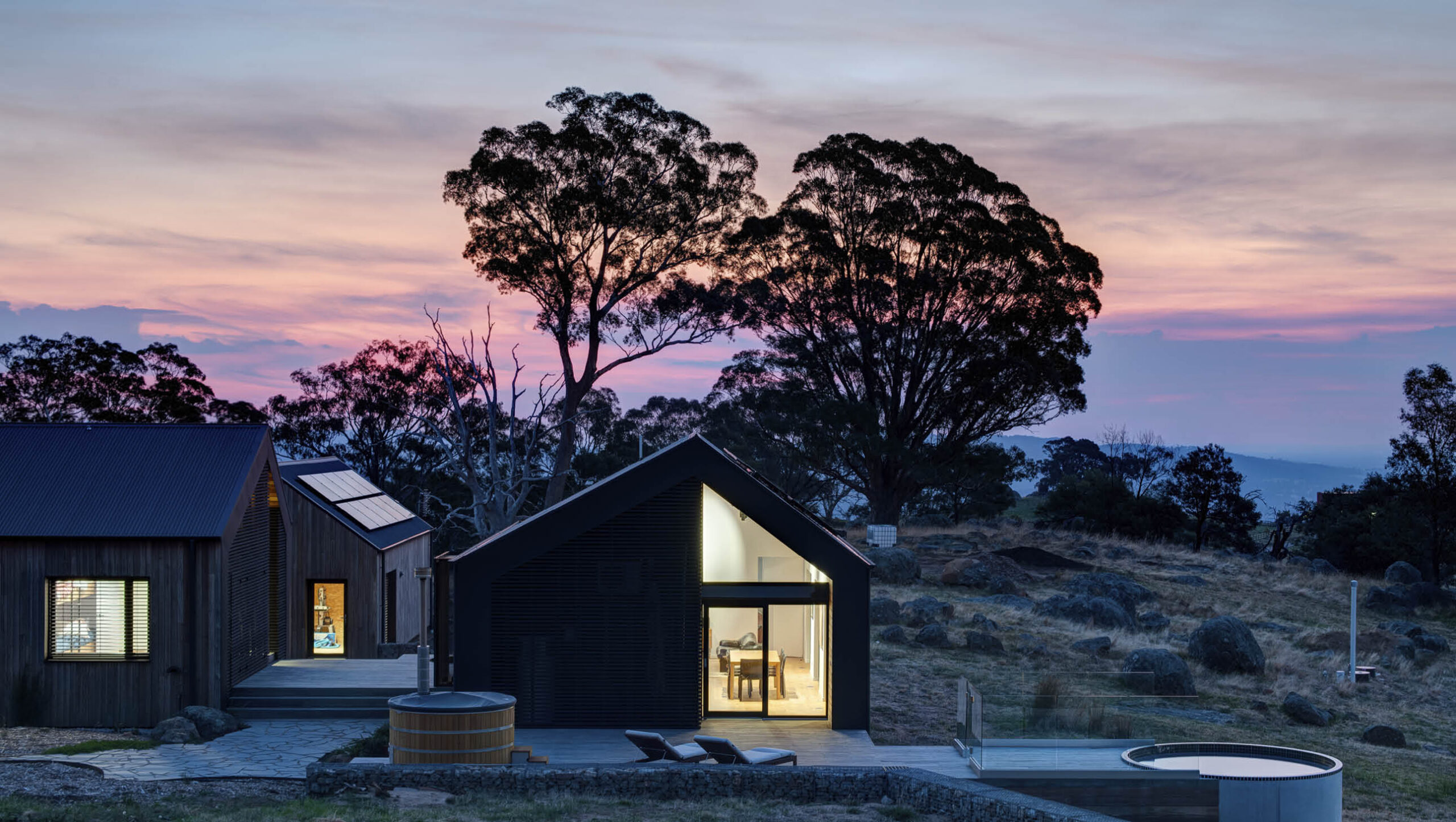Prefab houses: great for the environment and our housing crisis?
2024-03-12T03:44:46+11:00
Contructing homes offsite can be great for the environment and a huge time saver. Could it also solve some of Australia's housing problems?
When Melbourne-based architect John Tallis wanted to get houses built to the German Passivhaus eco-standard, it wasn’t easy to find builders who were interested in the idea, or who would do the job for a reasonable price.
“So we decided we’d do it ourselves,” he says.
The result is Our FabHaus, which Tallis founded three years ago to make prefabricated, high-spec passive homes at a price point that would provide value for money. The buildings are made from panels constructed in a factory (intially in Germany, but now in Australia), put together into modules, and shipped to the building site to be assembled. The company’s standard designs range from a granny flat to a four-bedroom house, and clients can customise them to suit their needs.
One big advantage of prefabicated, or modular, buildings (in other words, buildings that are constructed off-site), is the precision that you can achieve in a high-tech factory, Tallis says. And when you are building a passive house – which has high levels of thermal efficiency thanks to airtight design, insulation and high-quality windows – every millimetre counts.
“In layman’s terms, what we’re trying to do is create a draft-free house,” Tallis says.
Everything is planned and documented – “almost to a ridiculous, tedious level” – and when penetrations for services, for example, are cut before the panels leave the factory, Tallis knows all that planning won’t be undone by mistakes made on site.
“The machine in the factory does it perfectly every time,” Tallis says. “There could be no better partners than Passivhaus and prefabrication.”
Time saver
PreBuilt is another Melbourne-based builder that uses prefabrication to produce high-spec eco-buildings. It’s been doing so since 2003, and while it’s taken on everything from train stations to community buildings, its focus is on pre-designed and custom residential homes.
Building a house in a factory can be a win for the environment. PreBuilt says that less materials are used, less waste is produced, and fewer trips to the site also reduce a project’s carbon footprint. The land remains largely untouched during construction, and materials tend to be more sustainable than those used in traditional builds.
“Prefab construction doesn’t rely on traditional building materials such as concrete and brick, and provides the opportunity for recycling materials and bulk procurement,” says residential sales and marketing manager Anthea Bloye.
Offsite construction can also be a great time saver. PreBuilt’s modular system consists of steel structural members with timber frame infill. Insulation, cladding and the internal fit-out are completed in its Melbourne factory.
While a typical house takes 12 to 18 months to build onsite, a prefab house can be a much quicker proposition.

“Construction takes place in typically 12 to 16 weeks, with install in one day,” Bloye says. “Final onsite finishing takes about two to four weeks, depending on scope.”
Of course, prefab houses still need to go through planning processes, but even with that factored in, the end result can be a 40 to 50 per cent time saving compared with traditional builds, Bloye says.
Problem solver?
Generally speaking, the costs of building prefab or onsite are comparible, says Professor Priyan Mendis, the director of the Australian Research Council Centre for Advanced Manufacturing of Prefabricated Housing at the University of Melbourne. Yet, for all its environmental and time advantages, prefab building still hasn’t really taken off in Australia.
Mendis estimates that only about 5 per cent of new buildings are prefab. He says there are a few reasons for this. Firstly, people are unaware of the range of designs and the customisable nature of prefab houses, he says. Secondly, prefab houses require a large upfront payment (rather than payment in stages), which can put some lenders off. And thirdly, a lot of people are just reluctant to try something new.
“Even though prefab may be higher quality and more energy-effiecient, a lot of clients don’t want to take any chances,” Mendis says.
But prefab may be on the rise. A number of prefab building companies have been springing up around Australia to cater for clients who want high-quality eco-houses. And state governments, which have been investing in prefab buildings in schools for some time, are also starting to see the potential for prefabs to provide social housing.
Recent initiatives include Victoria delivering more than 100 energy-efficient modular homes for people at risk of homelessness in rural areas. In NSW, a $10m trial was announced to investigate modular housing’s potential to deliver quality social housing faster, while Queensland opened a new factory and apprenticeship centre to build prefab houses. In Tasmania the plan is to build at least 200 modular homes over the next four years for vulnerable people on the housing register.
Prefab definitely has the potential to help ease Australia’s housing crisis, Mendis says. “It will really help. For low-cost, efficient housing, it offers an advantage.”
Bloye agrees. “Streamlined and factory-based construction allows for a large production of units simultaneously, which makes prefab housing scalable and ideal for high demand,” she says. “Prefab houses can be transported and installed virtually anywhere. This flexibility can be especially important in rural areas.”
Fire and flood
Prefab buildings can also provide housing that is climate-change resilient. All houses made by PreBuilt, for example, are built to the BAL 19 bushfire standard – with sealed roofs, sealing around windows, doors and screening windows, non-combustible cladding and steel frames. With cladding, glazing and other material upgrades, it has also built homes that meet the stringent BAL 40 standards.
Should disaster strike, prefab builders are perfectly placed to provide temporary solutions for the dispossessed – as they have following the Black Summer bushfires and the NSW Northern Rivers floods in recent times.
Mendis says having houses that can be moved could be important as we adapt to climate change, and perhaps have to retreat from locations such as coastal areas.
“Traditional houses can’t be dismantled – they have to be demolished,” he says. “Prefab can be dismantled and re-used somewhere else.”
This re-usability is something we really should be thinking about in housing, Mendis says.
“In the future we will need circular economy solutions,” he says. “It’s not happening here yet, but in some countries, like Singapore, they are asking even now, what happens at the end of a building’s life? More focus on the circular economy will bring a lot more growth for prefab housing.”
This article first appeared in our Summer 2024 issue (OG 146). You can get a copy delivered to your door by clicking here.







